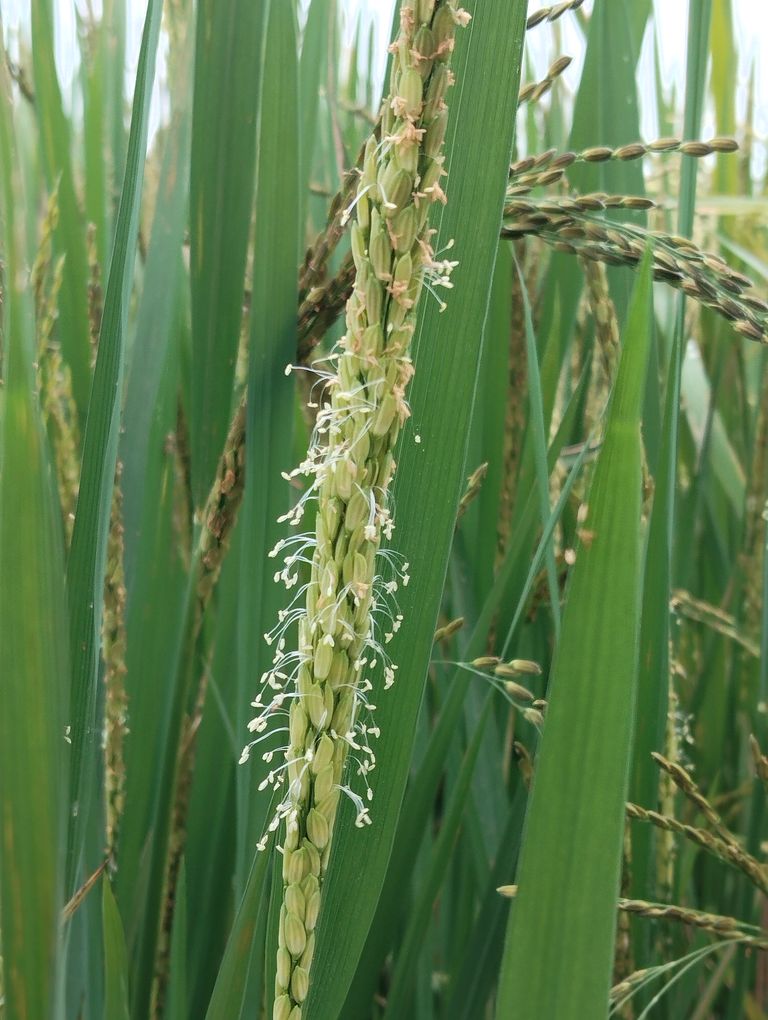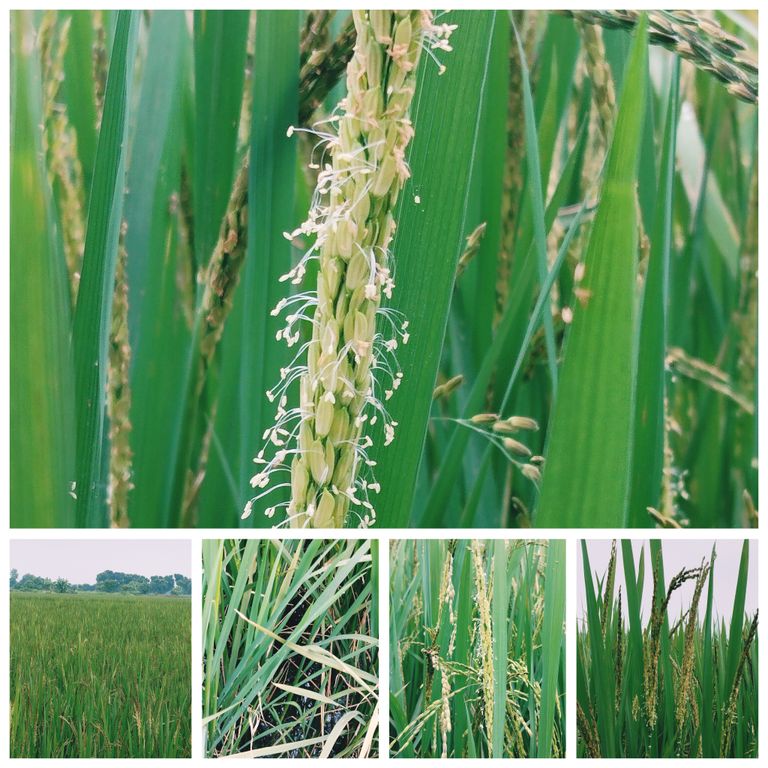
A Comprehensive Guide to Rice Cultivation: Methods and Best Practices.
Rice is one of the most important staple crops globally, feeding billions of people, particularly in Asia. Successful rice cultivation requires a deep understanding of the environment, soil, water management, and the growth stages of the plant. This guide will provide a comprehensive overview of rice farming, from land preparation to harvesting, with a focus on sustainable and efficient practices.
- Understanding Rice and Its Varieties
There are different types of rice grown worldwide, but the most common are Indica, Japonica, and Aromatic rice. The choice of rice variety depends on factors like climatic conditions, water availability, and consumer preferences. It’s important to select the right type of rice based on the growing region to ensure high yields and quality crops.
- Climate and Soil Requirements for Rice Farming
Rice thrives in warm and humid environments. The ideal temperature for rice cultivation is between 21°C and 37°C. Rice grows best in areas that receive abundant rainfall (around 100-150 cm annually), as it is a water-intensive crop. However, controlled irrigation systems can also facilitate rice growth in areas with lower rainfall.
The soil type for rice farming is also crucial. Rice grows well in clay loam soils that can retain water, but it can adapt to other soil types as long as they are fertile and well-drained. Testing soil fertility and ensuring proper pH levels between 5.5 and 6.5 can significantly impact yield.
- Land Preparation
Before planting, land preparation is key to ensuring healthy rice growth. This process involves:
Ploughing: The land must be ploughed and tilled properly to break up soil clumps and create a soft, aerated environment for seed germination.
Levelling: Level the field to ensure uniform water distribution during flooding.
Weed Control: Weeds should be removed before planting to prevent competition for nutrients and water. Herbicides or manual weeding can be used.
Water Management: Create bunds (small embankments) to retain water in the field.
Land preparation may vary slightly based on the cultivation method used, such as direct seeding or transplantation.
- Methods of Rice Cultivation
There are two primary methods of rice cultivation: transplantation and direct seeding. Each method has its benefits and challenges.
a. Transplantation Method
The transplantation method is the most traditional and widely used technique for rice cultivation.
Seedbed Preparation: Seeds are sown in a nursery bed first and grown until they are about 25-30 days old. Seedbeds should be fertilized and well-watered.
Seedling Transplantation: Once seedlings are ready, they are carefully uprooted and transplanted into the main field. Seedlings are planted at a depth of about 3-4 cm, with a spacing of about 20 cm apart.
Advantages: Transplantation gives the rice plants a strong start, minimizing the risk of damage from pests. It also allows for better weed control as seedlings are more mature when planted.
Challenges: This method requires more labor and time due to the need for preparing the nursery and the delicate process of transplanting.
b. Direct Seeding Method
In the direct seeding method, seeds are sown directly into the field without the need for a nursery.
Wet Direct Seeding: Seeds are broadcasted or drilled into the field while it is flooded.
Dry Direct Seeding: Seeds are sown into a dry field, followed by flooding for germination.
Advantages: This method is less labor-intensive and saves time. Direct seeding also allows for early harvesting.
Challenges: Weeds can be a significant problem in direct seeding, requiring additional herbicides or manual weeding. Moreover, plant survival rates can be lower compared to transplantation.
- Water Management
Water is crucial for rice cultivation, and proper management is essential for maximizing yields. The most common water management systems include:
Flooding: Fields are flooded with water to a depth of about 5-10 cm to help control weeds and provide an optimal growing environment.
Irrigation: In areas with less rainfall, controlled irrigation systems can be used to deliver water to the fields. Irrigation ensures the fields remain wet during the early stages of growth and reduces water wastage.
Effective water management techniques, such as alternate wetting and drying (AWD), can save up to 30% of water without affecting the yield. This method involves keeping the soil alternately flooded and drained, promoting better root health and reducing methane emissions from flooded fields.
- Fertilizer Application
Applying the right fertilizers at the right stages of growth is critical for rice production. Nitrogen (N), Phosphorus (P), and Potassium (K) are the primary nutrients required by rice plants.
Nitrogen is vital for vegetative growth and should be applied in multiple splits, especially during the tillering and panicle initiation stages.
Phosphorus promotes root growth and helps the plant develop resistance to disease.
Potassium strengthens the plant’s overall structure and improves grain quality.
In addition to chemical fertilizers, organic manures like compost or green manure can improve soil health and structure.
- Pest and Disease Management
Rice crops are susceptible to various pests and diseases. Rice stem borers, leafhoppers, brown planthoppers, and gall midges are common pests that can affect the crop yield. To control pests:
Use pest-resistant rice varieties.
Implement crop rotation to reduce pest build-up.
Practice integrated pest management (IPM) by using biological controls like beneficial insects or neem oil, in combination with minimal pesticide use.
Common rice diseases include blast, sheath blight, and bacterial leaf blight. To manage diseases:
Ensure good drainage in fields to avoid excessive moisture, which encourages fungal growth.
Use certified disease-free seeds.
Apply fungicides when necessary, but always consider the environmental impact.
- Harvesting and Post-Harvest Management
The timing of the harvest is crucial for maintaining grain quality. Rice should be harvested when the grains reach full maturity, which is typically 30-35 days after flowering. If harvested too early, the grains may be immature and of poor quality; if too late, the grains may shatter.
Manual Harvesting: Rice is traditionally harvested using sickles, which allows for careful handling of the crops.
Mechanical Harvesting: Combines can be used for larger fields, reducing labor and time.
After harvesting, rice undergoes several post-harvest processes, such as threshing, drying, milling, and storage. Proper drying is critical to reduce moisture content to around 14%, preventing spoilage and ensuring longer shelf life.
- Sustainable Rice Farming Practices
Sustainable rice farming involves methods that improve productivity while protecting the environment. Some practices include:
System of Rice Intensification (SRI): A method that reduces water usage, requires fewer seeds, and increases yield. SRI involves planting younger seedlings, wider spacing, and minimal flooding.
Organic Farming: Growing rice without synthetic fertilizers or pesticides to promote ecological balance and enhance soil fertility.
Agroforestry and Cover Cropping: Integrating trees or other crops within the rice field to improve biodiversity and enhance soil quality.
Conclusion
Rice cultivation is a labor-intensive but rewarding process. By understanding the requirements of the crop, managing resources efficiently, and adopting sustainable practices, farmers can ensure healthy, high-yielding rice crops. As the global demand for rice continues to grow, improving rice farming techniques is essential for ensuring food security and supporting the livelihoods of millions of people worldwide.
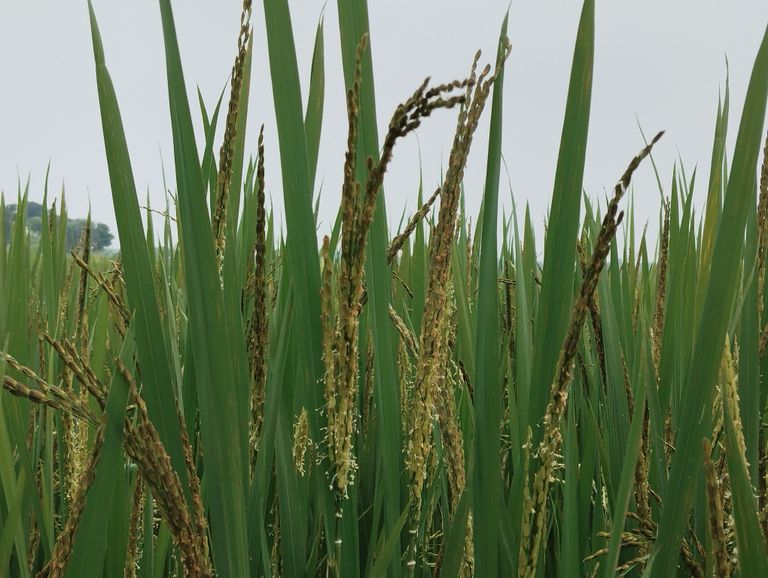
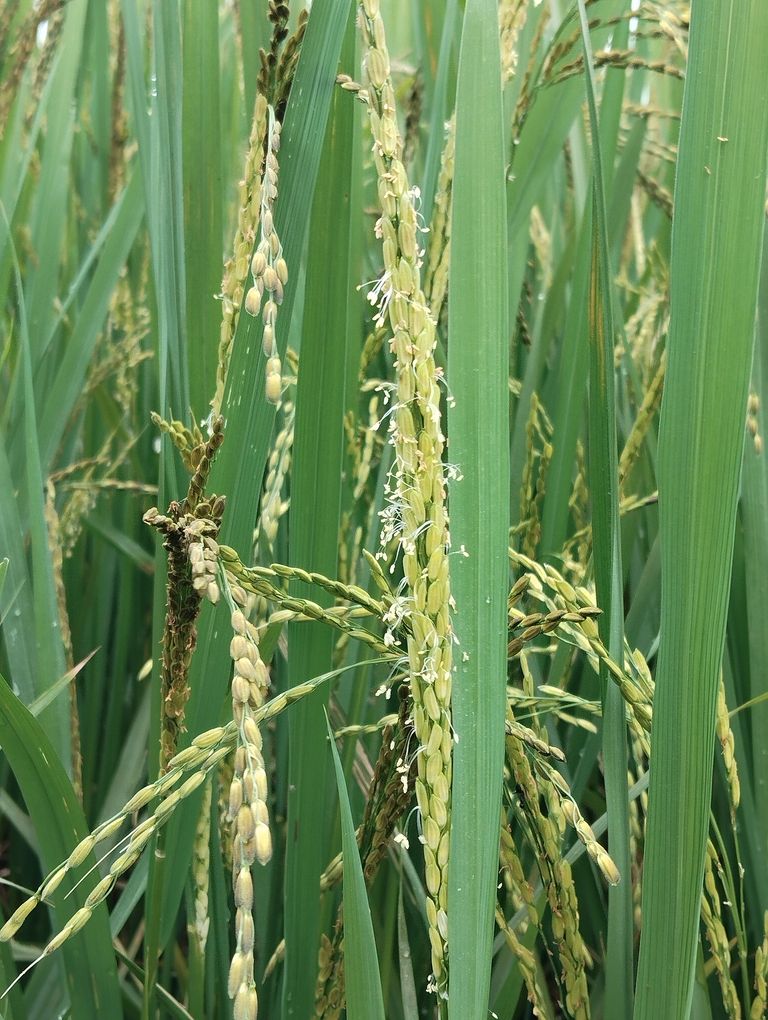
Rice Diseases and Pests: A Comprehensive Overview
Introduction
Rice (Oryza sativa) is one of the most important staple crops worldwide, feeding billions of people. However, its cultivation is often hindered by various diseases and pests that can severely affect yields. These diseases can lead to significant economic losses and food insecurity, especially in countries that rely heavily on rice as a primary food source. This blog will provide a comprehensive overview of the major rice diseases and pests, their causes, symptoms, and management strategies.
- Bacterial Diseases
a. Bacterial Leaf Blight (BLB)
Causal Organism: Xanthomonas oryzae pv. oryzae
Symptoms: Bacterial leaf blight is one of the most destructive rice diseases. It starts as water-soaked streaks on the leaf blades, which later turn yellow and brown. As the disease progresses, the leaves dry out, giving the plant a scorched appearance.
Conditions Favoring the Disease: BLB thrives in high humidity, warm temperatures, and areas with frequent rain or irrigation.
Management:
Use resistant rice varieties.
Maintain proper field sanitation.
Avoid excessive nitrogen fertilization.
Apply copper-based fungicides to suppress the bacterial spread.
b. Bacterial Leaf Streak (BLS)
Causal Organism: Xanthomonas oryzae pv. oryzicola
Symptoms: Small, water-soaked streaks on the leaves that eventually elongate and merge, forming larger yellowish-brown lesions.
Management:
Use resistant varieties.
Ensure proper drainage and reduce standing water.
Regularly monitor fields for early detection.
- Fungal Diseases
a. Rice Blast
Causal Organism: Magnaporthe oryzae
Symptoms: This disease is characterized by diamond-shaped lesions on leaves, which may also occur on the neck and panicles, reducing grain production. Severe infection can lead to complete crop failure.
Conditions Favoring the Disease: Warm temperatures, high humidity, and frequent rainfall.
Management:
Plant resistant rice varieties.
Rotate crops to break the disease cycle.
Apply fungicides such as tricyclazole and azoxystrobin when necessary.
b. Sheath Blight
Causal Organism: Rhizoctonia solani
Symptoms: Irregular, oval lesions on the leaf sheath, which eventually expand, causing the infected area to rot. The disease may progress to other parts of the plant, leading to reduced tillering and poor grain filling.
Conditions Favoring the Disease: Warm and humid conditions, especially in densely planted fields.
Management:
Avoid excessive nitrogen use.
Use fungicides such as hexaconazole or validamycin.
Practice crop rotation to minimize pathogen buildup.
c. Brown Spot
Causal Organism: Cochliobolus miyabeanus
Symptoms: Small, circular brown lesions on leaves and glumes. Severe infections lead to premature death of the plant.
Management:
Use resistant varieties.
Ensure balanced nutrition, particularly potassium and silicon.
Fungicides like propiconazole can help manage outbreaks.
- Viral Diseases
a. Rice Tungro Virus
Causal Organism: Rice Tungro Bacilliform Virus (RTBV) and Rice Tungro Spherical Virus (RTSV)
Symptoms: Stunted growth, yellow-orange discoloration of leaves, and poor tillering. Infected plants produce fewer grains, and the grains are often deformed.
Transmission: Spread by the green leafhopper (Nephotettix virescens).
Management:
Use resistant varieties.
Control vector populations using insecticides.
Remove infected plants to prevent the spread of the virus.
- Nematode Infestation
a. Rice Root Nematode
Causal Organism: Hirschmanniella oryzae
Symptoms: Infected plants exhibit stunted growth, yellowing, and poor tillering. Root systems show brown lesions and rotting.
Management:
Flooding the field during fallow periods can help reduce nematode populations.
Crop rotation with non-host plants like legumes.
Use nematicides in severe cases.
- Insect Pests
a. Brown Planthopper (BPH)
Scientific Name: Nilaparvata lugens
Symptoms: BPH sucks sap from rice plants, leading to hopper burn (yellowing and drying of the plants). Severe infestations can lead to complete crop loss.
Management:
Use resistant varieties.
Monitor fields and control populations with appropriate insecticides.
Practice alternate wetting and drying of fields to disrupt BPH life cycles.
b. Rice Stem Borer
Scientific Name: Scirpophaga incertulas
Symptoms: Stem borers cause "dead hearts" in young plants and "whiteheads" in older plants, leading to reduced grain yield.
Management:
Apply insecticides like fipronil and chlorantraniliprole.
Use pheromone traps to monitor and control populations.
Remove and destroy infected plant parts to prevent further spread.
- Integrated Disease and Pest Management (IDPM)
Effective control of rice diseases and pests often requires an integrated approach, combining biological, chemical, and cultural practices to minimize damage and economic losses. Here are some general management practices that can help:
a. Cultural Practices
Plant disease-resistant varieties suitable for the local environment.
Follow proper planting techniques, including spacing, to reduce humidity and allow good airflow.
Practice crop rotation with non-host crops like legumes to break the life cycles of pathogens and pests.
Remove and destroy crop residues after harvest to minimize overwintering of pests and pathogens.
Maintain proper irrigation practices to avoid water stress and reduce conditions favorable for diseases like blast and sheath blight.
b. Chemical Control
Fungicides, bactericides, and insecticides should be used judiciously to control diseases and pests without leading to resistance.
Ensure the timely and correct application of pesticides, following recommended dosages and guidelines to minimize environmental impact.
c. Biological Control
Utilize natural predators like ladybugs and spiders to control insect populations.
Introduce beneficial microorganisms like Trichoderma to suppress fungal diseases.
Encourage the use of biopesticides derived from plants, bacteria, or fungi as part of an environmentally friendly pest management strategy.
d. Monitoring and Early Detection
Regular monitoring of rice fields can help identify early signs of disease or pest outbreaks.
Farmers should use tools such as pheromone traps, light traps, and visual inspections to detect insect pests before they cause significant damage.
Conclusion
The successful management of rice diseases and pests is essential to ensuring food security and sustaining agricultural economies. Farmers must adopt a holistic approach, integrating resistant rice varieties, cultural practices, chemical treatments, and biological controls to minimize the impact of these threats. As global rice demand continues to grow, research and innovation in disease-resistant breeding, pest management, and sustainable farming practices will play a crucial role in protecting rice crops from future challenges.
By understanding the causes and symptoms of these diseases and pests and implementing integrated management strategies, we can safeguard rice production and contribute to global food security.
References:
- International Rice Research Institute (IRRI) - www.irri.org
- FAO (Food and Agriculture Organization) – www.fao.org
- Local Agricultural Extension Services
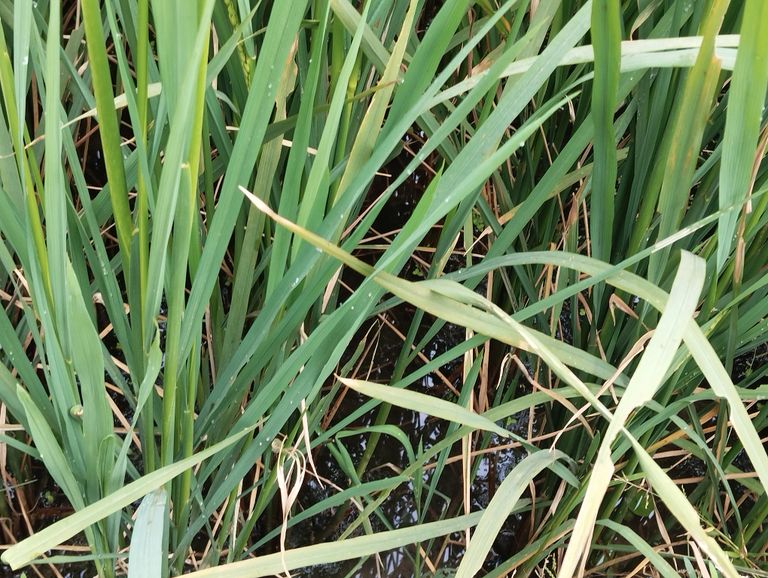
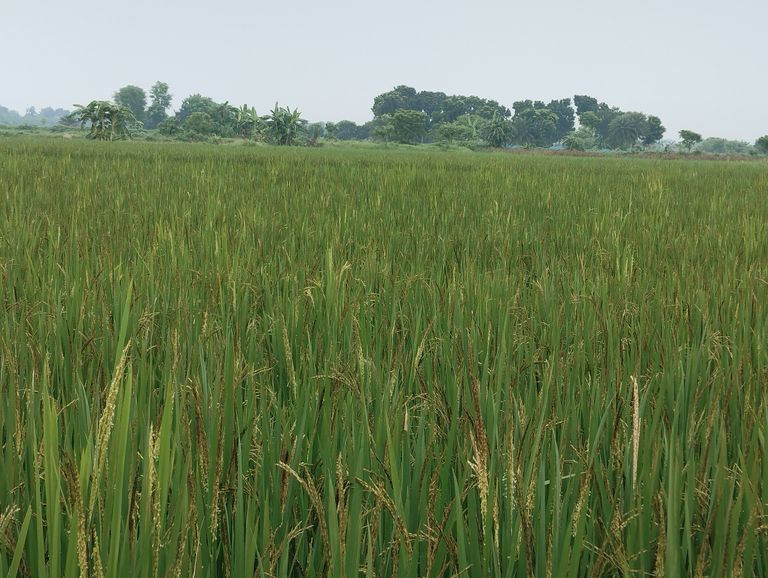
A Comprehensive Guide to Rice Cultivation and Maximizing Yield
Rice is one of the most important staple foods for over half of the world's population, particularly in Asia and Africa. Its cultivation plays a significant role in the livelihoods of millions of farmers globally, contributing to both food security and economic growth. This blog delves into the methods of rice cultivation, factors influencing rice yield, and tips to maximize productivity.
Understanding Rice Cultivation
Rice is primarily grown in tropical and subtropical regions, and it requires specific climatic conditions for optimal growth. The cultivation of rice involves several stages, from land preparation and seed selection to harvesting and post-harvest handling.
- Climate Requirements for Rice Cultivation
Rice is a water-intensive crop that thrives in areas with ample rainfall or reliable irrigation systems. The ideal growing conditions include:
Temperature: Rice grows best in temperatures between 20°C and 35°C. Extreme temperatures, whether too hot or cold, can negatively affect germination and growth.
Rainfall: Rice fields need a minimum of 1200 mm of rainfall annually. Most rice varieties are grown in regions with 2000 mm or more rainfall.
Humidity: High humidity levels (70% to 80%) favor rice growth, especially during the growing season.
Sunlight: Rice requires plenty of sunshine, ideally six to eight hours a day during the growing period.
- Types of Rice Cultivation
There are three main types of rice cultivation based on water availability and planting methods:
Upland Rice Cultivation: Upland rice is grown in well-drained soils without standing water. It is mostly rainfed, and yields are usually lower than in irrigated systems due to varying rainfall.
Lowland Rice Cultivation: Lowland rice is cultivated in fields that are flooded for most of the growing season. This is the most common method of rice cultivation globally, as it allows for higher yields.
Deepwater Rice Cultivation: In regions prone to seasonal flooding, deepwater rice is grown. These varieties have a longer growing season and can survive in water depths of up to 3 meters.
- Steps in Rice Cultivation
a) Land Preparation
Preparing the land is the first and one of the most crucial steps for a successful rice crop. Properly leveled fields with well-maintained bunds (small embankments) help in the efficient distribution of water. The land is tilled and plowed to a fine tilth, which improves water retention and provides a good base for seedling establishment.
b) Seed Selection and Treatment
Choosing the right variety of rice is critical. Farmers need to select seeds that are suited to their region’s climate and soil type. Hybrid seeds are often used to increase yield. Before sowing, seeds are treated with fungicides or hot water to prevent diseases.
c) Nursery Preparation and Transplanting
Rice is commonly grown using two methods:
Direct Seeding: Seeds are sown directly into the field either by broadcasting or drilling. This method requires less labor but is often prone to weed infestation.
Transplanting: In this method, rice seedlings are first raised in a nursery and then transplanted into the main field. This ensures healthier plants and better weed control but is more labor-intensive.
d) Water Management
Effective water management is key to maximizing rice yields. Rice fields are typically flooded during the growth period, which helps control weeds and pests while providing the crop with a constant water supply. However, over-flooding or water stress can harm plant growth. Farmers need to ensure that the water levels are maintained optimally based on the growth stage of the plant.
e) Nutrient Management
Nutrient management plays a vital role in rice production. Rice plants require a balanced supply of nitrogen (N), phosphorus (P), and potassium (K) to grow well. Organic manure and green manure are often used to enrich the soil with essential nutrients. Additionally, mineral fertilizers are applied at different stages of growth to ensure optimal nutrient availability.
f) Weed and Pest Control
Weeds compete with rice plants for nutrients, water, and sunlight, which can significantly reduce yields. Regular weeding is essential, especially in the early stages of crop growth. Herbicides are commonly used in conjunction with manual weeding to ensure effective weed control.
Pests like rice stem borers, leafhoppers, and planthoppers are common threats to rice crops. Integrated pest management (IPM) practices, including the use of biological controls, resistant varieties, and chemical treatments, help in controlling pest populations and preventing crop damage.
g) Harvesting
Rice is harvested when the grains have matured and turned golden. The timing of the harvest is crucial as harvesting too early or too late can lead to yield losses. Harvesting can be done manually or mechanically, depending on the scale of farming and the availability of labor or machinery.
- Post-Harvest Handling
After harvesting, rice undergoes several post-harvest processes including threshing, drying, and milling. Proper post-harvest handling ensures that the rice grains are stored properly, maintaining their quality and reducing losses. Drying rice to the right moisture level (14%) is crucial to prevent fungal growth and preserve grain quality.
Factors Affecting Rice Yield
Several factors directly influence the yield of rice crops, including:
Seed Variety: Hybrid and high-yielding varieties tend to produce more grains per plant than traditional varieties.
Soil Quality: Nutrient-rich, well-drained soils with good structure promote healthy root systems and better plant growth.
Water Management: Proper irrigation and drainage ensure that rice plants have access to water without suffering from drought or waterlogging.
Climate Conditions: Favorable weather conditions, including ample sunlight, moderate temperatures, and adequate rainfall, are crucial for good yields.
Pest and Disease Control: Timely control of pests and diseases through the use of resistant varieties and proper management practices can significantly reduce yield losses.
Farming Techniques: The method of cultivation, including transplanting, direct seeding, and the use of modern machinery, also has a direct impact on productivity.
Tips to Maximize Rice Yield
To get the most out of your rice fields, consider the following tips:
Choose the Right Seed Variety: Select high-yielding, disease-resistant varieties suited to your climate and soil type.
Optimize Water Use: Use irrigation systems that allow for efficient water management. Techniques like Alternate Wetting and Drying (AWD) can help conserve water without reducing yield.
Ensure Proper Nutrient Management: Test your soil regularly to determine its nutrient content and apply fertilizers based on the specific needs of your crop.
Adopt Integrated Pest Management (IPM): Use a combination of biological controls, cultural practices, and chemical treatments to keep pest populations under control without harming the environment.
Use Modern Farming Techniques: Where possible, mechanize operations like plowing, transplanting, and harvesting to save labor and improve efficiency.
Conclusion
Rice cultivation is both an art and a science that requires a deep understanding of the crop’s needs and the environment it grows in. By adopting best practices, improving water and nutrient management, and using modern farming techniques, farmers can significantly increase their rice yields and contribute to global food security. Whether you are a smallholder or a large-scale farmer, these tips and guidelines can help you make the most of your rice farming operations.
